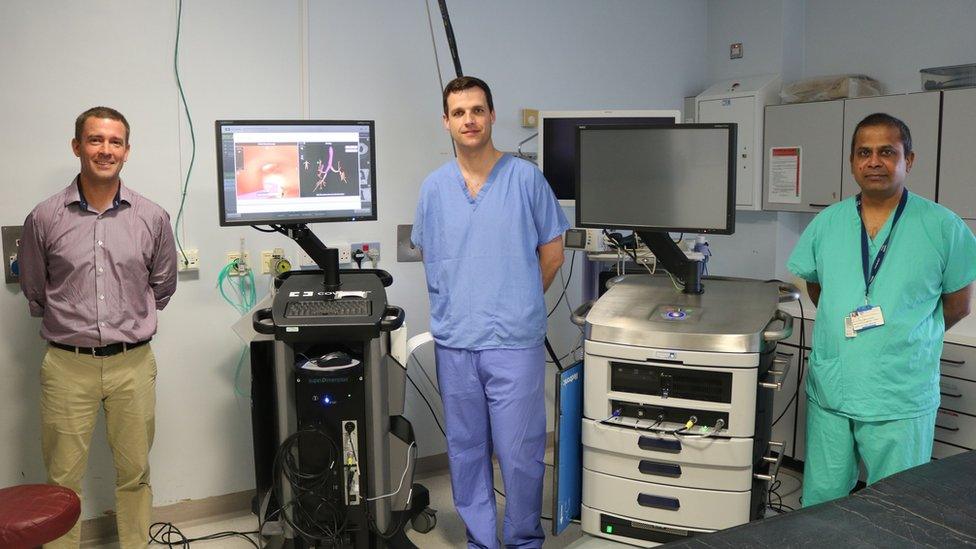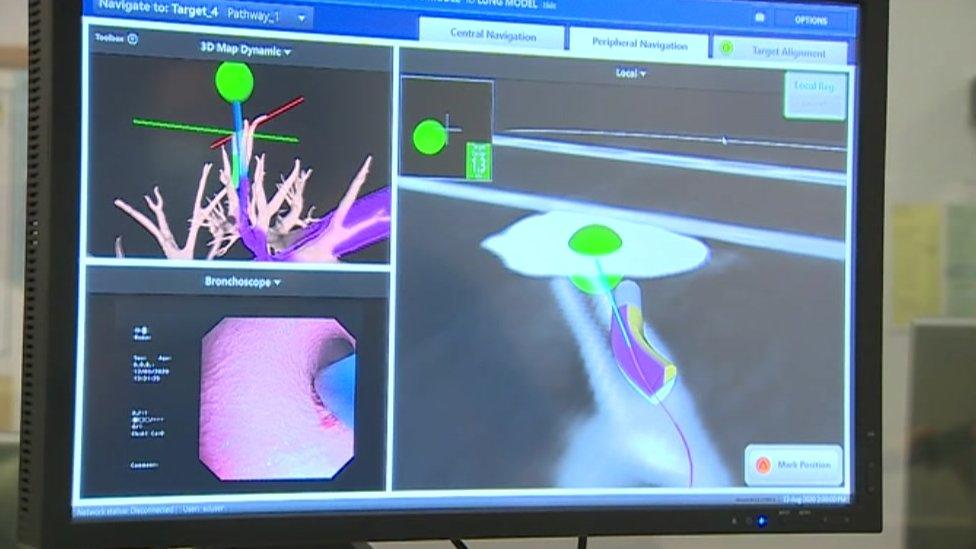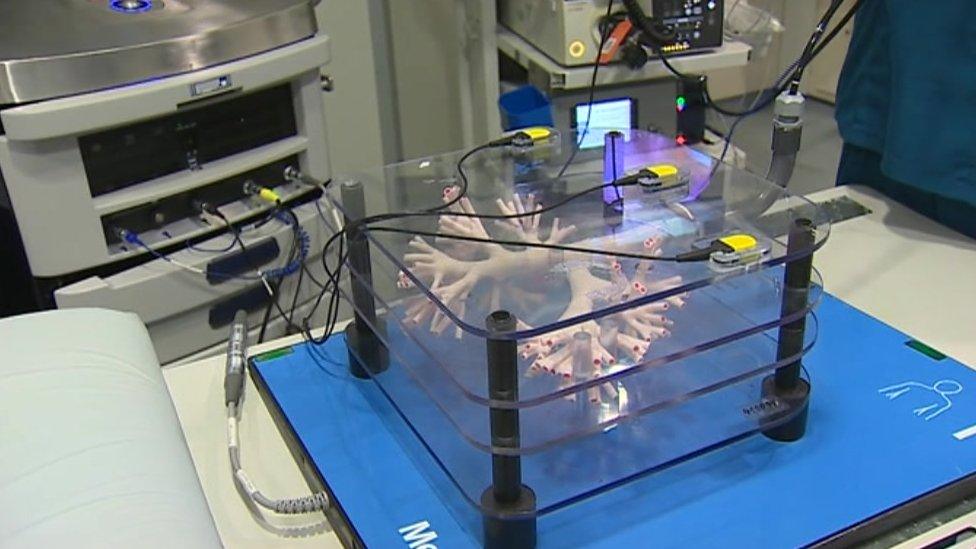Hidden cancers detected using 'GPS-map' of lungs
- Published

Consultants at Glan Clwyd Hospital said the equipment was a game changer for cancer care
A "game-changing" scan which creates a GPS-style map of patients' lungs is being used to spot signs of cancer early.
The electromagnetic navigation bronchoscopy (ENB) is being used at Glan Clwyd Hospital, Denbighshire.
Ann Bedford, 74, from Anglesey, said she was "extremely lucky" after it spotted her tumour early.
Consultant Robin Poyner said it would lead to a "significant improvement" in cancer care.
Glan Clwyd is only the second hospital in the UK to use the equipment, after local people donated £130,000 to the north Wales NHS charity Awyr Las.
The bronchoscopy uses GPS-like technology to build a 3D image of the lungs.
Consultants said this highlighted tumours that might previously have been missed because they were too small or in awkward places.
This map then helps doctors guide a catheter through the lungs' most complex airways. They can then treat cancerous tumours as quickly as possible.
Dr Poyner, consultant in respiratory medicine, said the equipment was a "game changer" for cancer care.
"Most patients who have ENB treatment can go home on the same day so this is a major advancement in technology for us, and will lead to a significant improvement in cancer care in north Wales," he said.

The technology helps guide surgeons to parts of the lungs to remove the tumours
Three years ago, Ms Bedford, from Trearddur Bay, had surgery for lung cancer and had recovered, but after becoming unwell again she was sent for a check up at the hospital.
The technology detected the cancer early and she was diagnosed quickly.
"When I was first diagnosed with lung cancer I had to undergo surgery and chemotherapy.
"My biggest fear would be that it wasn't diagnosed in time, and then I would've reached a grade three or a grade four," she said.
"As the cancer was found early it gave me options on what treatment I could have and I now only need a short course of radiotherapy."

The map of the lung shows up small tumours which could previously have been hidden
Respiratory consultant Daniel Menzies said tumours like these would have been difficult to diagnose in the past.
"Up until now it has been difficult to get an early diagnosis, sometimes because of the location of the cancer in the patient's chest.
"We may have had to watch them over months or even years before we were sure," he said.
"Unfortunately sometimes over the period the patient can become more unwell and frail and it means their treatment options become more limited.
"Using this technology we can get there faster and give the treatment to them much quicker".
- Published13 August 2020

- Published18 June 2020
